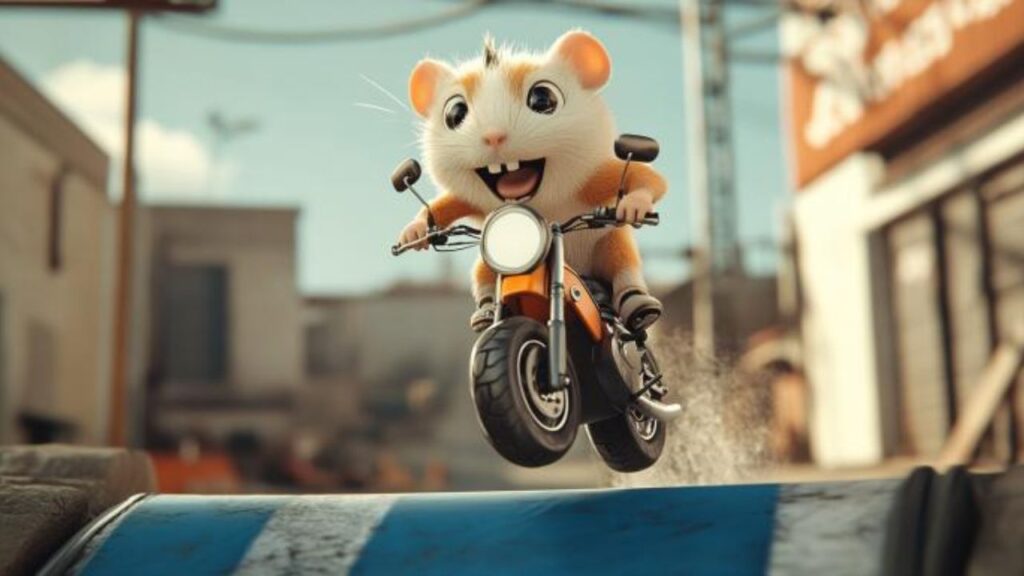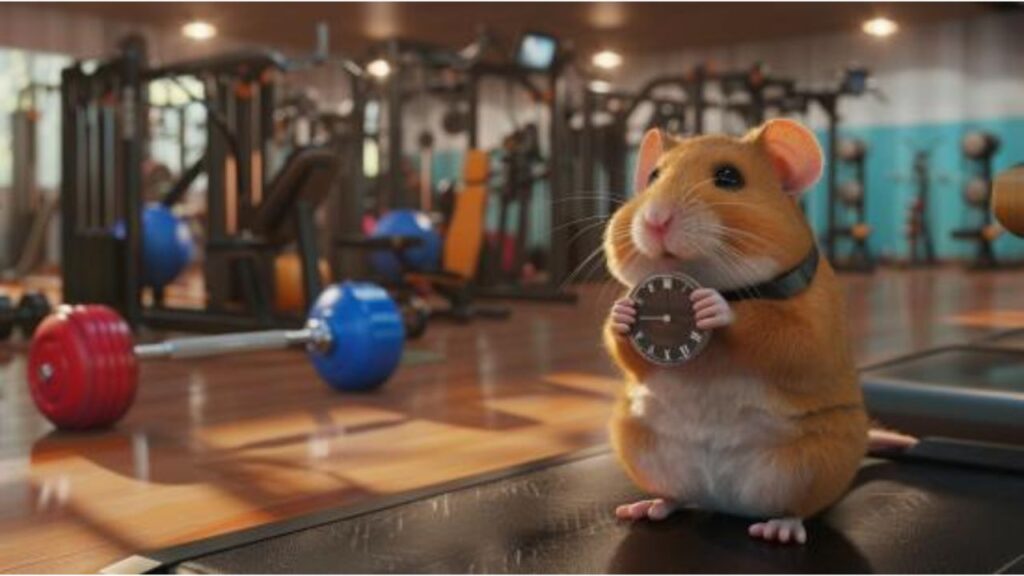Imagine this – you’ve had a long day, and as you push open your front door, the familiar clinking and rustling sounds from your hamster’s cage greet you. But what if instead of just running in its wheel or nibbling on some treats, your furry friend breaks into a delightful little dance, celebrating your return? Pure fantasy? Not quite! With the wonders of clicker training, such a whimsical scenario can become a heartwarming daily ritual. In a world where communication transcends species boundaries, teaching your hamster to respond to cues isn’t a fairy tale; it’s a tangible, achievable reality. And guess what? You don’t need a magic wand or a fairy godmother. Just a clicker, some patience, and a sprinkle of know-how.
Purpose of the Article 📘
Clicker training is not merely a modern-day pet buzzword; it stands as a transformative approach in the realm of hamster interaction and bonding. This technique, rooted deeply in behavioral science, serves as a bridge between our world and theirs. By using the simple, crisp sound of a clicker, you’re laying down a foundation for clear, concise communication with your hamster. 🐹❤️ Beyond just “cute tricks,” this method fosters trust, mutual respect, and a profound bond that resonates on a deeper emotional level. Think of it as unlocking a secret language, where each click and treat tells a story, weaving a tapestry of shared experiences and memories.
Roadmap 🗺️
Strap in, dear reader, because we’re about to embark on a riveting exploration into the world of clicker training. Together, we’ll traverse through the mesmerizing science underpinning this method, revealing its abundant benefits. We’ll address the skeptics, debunk the myths, and spotlight the myriad success stories from hamster enthusiasts worldwide. Whether you’re a newbie just dipping your toes or a seasoned hamster parent seeking fresh engagement methods, there’s something here for everyone. By the end, you won’t just be informed; you’ll be inspired and equipped to choreograph your hamster’s dance sequences. So, lace up your dancing shoes, grab your clicker, and let’s waltz into the enchanting world of hamster-human harmonization! 🕺🐹💃🎶
Clicker Training Decoded 🧠🔍
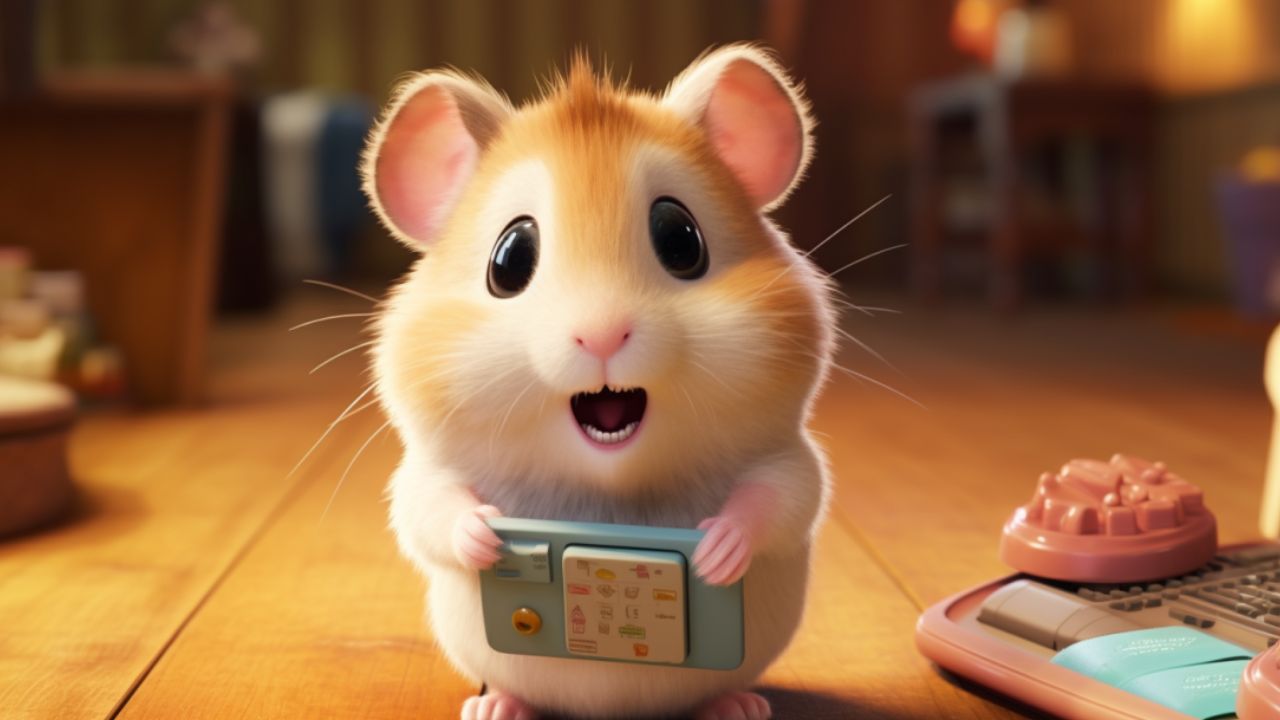
As we venture into the delightful realm of clicker training, it’s crucial to grasp its foundational principles. It might seem like a simple clicking mechanism on the surface, but beneath that audible tick lies a world rich with behavioral science, psychology, and some sprinkles of hamster magic. 🌟🐹📘 So, before we embark on this transformative journey with our little furballs, let’s decode the art and science behind those impactful clicks. Whether you’re a seasoned hamster enthusiast or a newbie, there’s always something fascinating to learn about the world of clicker training. Ready to dive in? 🏊♂️📚🎉
What’s that Sound? 🎵
Ah, the clicker: a small device that emits a peculiar, sharp sound, and yet, its impact in the world of animal training is nothing short of monumental. But what exactly is clicker training, and where did it all begin?
Originating from the bowels of behavioral science in the mid-20th century, clicker training has its roots in the operant conditioning techniques developed by psychologists like B.F. Skinner. Initially experimented with in training marine animals, the clicker soon emerged as a universal tool, transcending the barriers of species. Its application expanded from dolphins to dogs and, yes, even to our little whiskered wonders, hamsters.
At its core, clicker training is a positive reinforcement method. The “click” acts as a bridge, a marker, signaling to the hamster that whatever action they just performed is precisely what you were looking for. It’s like capturing that golden moment in a photo, but instead of a camera, you use the click sound. Following this “eureka” click, the hamster knows a treat or reward is imminent. 🍪🐹
Science Speaks 🧪🔬
But why a click, and not a word, or a whistle, or any other sound? What’s so special about this auditory cue?
The power of the click lies in its consistency and distinctiveness. Unlike our voices, which can waver in tone, pitch, and emotion, the click remains unchanging. It’s precise, immediate, and devoid of any emotional variance, making it an unmistakable signal for our pets. The uniformity of the sound ensures clarity, eliminating any potential confusion.
And hamsters, with their keen auditory senses, are particularly attuned to these consistent sonic markers. The rapid ‘click’ serves as an instant feedback mechanism. Over repeated sessions, our furry friends begin to associate the click with positive outcomes, fostering an environment where they are more inclined to repeat the behavior that earned them the reward in the first place.
Neuroscientifically speaking, the click activates a pleasure center in the hamster’s brain. When they hear it, their brain releases a dose of dopamine, the “feel-good” neurotransmitter, leading to a state of excitement and anticipation. Over time, this association becomes ingrained, turning the click into a powerful motivational tool. It’s like telling your hamster, “You nailed it, buddy!” with every click, reinforcing the behavior in a positive, encouraging manner. 🐹🎖️🧠
The Benefits Bazaar
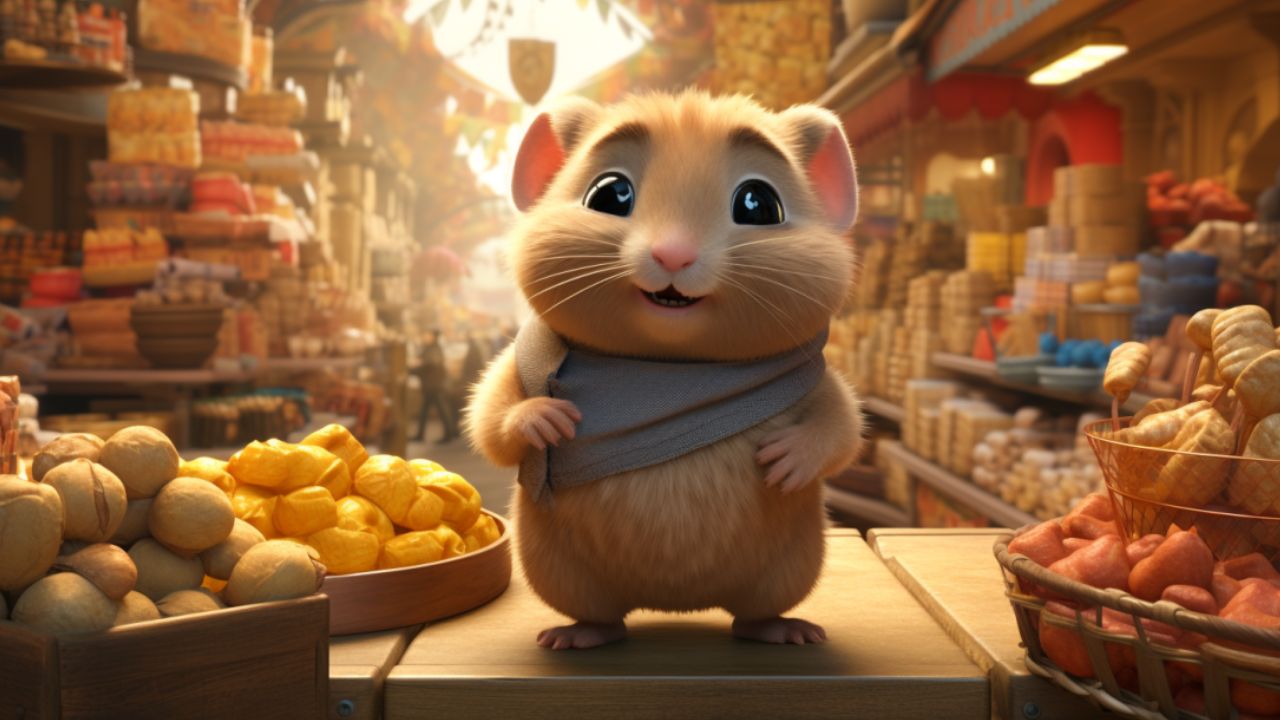
Ah, the wonders of clicker training! You might be thinking it’s all about teaching your hamster the latest tricks to show off to friends, but there’s so much more to it. Dive into this enlightening section where we not only unveil the plethora of perks clicker training offers but also share a tale that’ll undoubtedly tug at your heartstrings. 🐹💓🎪
Beyond Tricks
At first glance, clicker training might seem like just another method to teach your hamster some nifty tricks. While that’s a delightful aspect, it barely scratches the surface. Here’s the beauty of it:
- Mental Gymnastics 🧠🤸: Every click and treat serves as a stimulating puzzle for your hamster, keeping their brain active and sharp.
- Bonding Bonanza 💞🐹: The consistent interaction during clicker sessions creates a unique understanding and trust between you and your furball. Over time, it’s not just about treats; it becomes a bonding ritual that both of you eagerly anticipate.
- Communication Channel 📞🐹: Clicker training allows you to communicate with your hamster in a language they understand, making it easier to convey what behaviors are appreciated.
- Boosted Confidence 🌟🚀: As your hamster masters new tasks and gets rewarded for it, they grow more self-assured, exploring their environment with newfound enthusiasm.
Case Study – Tommy & Tinkerbell
Every hamster has a unique personality, and our little friend Tinkerbell was no exception. Initially, she was the shy, retiring type, preferring dark corners to the limelight. Enter Tommy, a first-time hamster parent, eager to bridge the communication gap and form a bond with his new companion.
Using a clicker and some scrumptious treats, Tommy started simple training sessions. To his amazement, within a few weeks, not only did Tinkerbell master a few tricks, but she also began approaching the cage’s entrance every time Tommy walked into the room, eager for their training rendezvous.
The transformation was evident. From a timid hamster hesitant to venture out of her nest, Tinkerbell became the star performer of the house, wowing visitors with her antics. And the bond between the duo? Well, let’s just say they became inseparable buddies, sharing countless moments of joy and understanding.
The moral of this tale? Clicker training isn’t just about tricks; it’s about fostering connections, understanding, and trust. And, as Tommy and Tinkerbell show, it can pave the way for magical transformations. 🌟🐹❤️
Getting Started: Clicker Basics

Diving into the world of clicker training is akin to embarking on a magical journey with your hamster. 🐹✨ But before you both dance to the tune of those clicks, there are some basics to lay down. From picking the ideal clicker to setting the ambiance for your hamster’s first clicker session, let’s make sure you have all the tools and knowledge for a spectacular start!
Choosing Your Clicker
The market is rife with various clickers, each with its unique design and sound. So, which one is the perfect fit for your furry friend? Let’s break it down:
- Standard Box Clicker: This is the traditional clicker that most trainers begin with. It’s easy to use and produces a distinct sound, but it might be a tad loud for some hamsters.
- Soft Sound Clicker: Designed for pets who might be sensitive to louder sounds, it’s perfect for a hamster who’s a bit on the shy side.
- Clicker with Whistle: Some clickers come with an inbuilt whistle, offering a dual mode of training. This might be especially useful if you’re planning to train your hamster in more advanced tasks later on.
It’s crucial to test the clicker outside the cage first and gauge your hamster’s reaction. Remember, it should pique their interest, not scare them.
The First Click
The first click is a milestone, a founding stone of all the fun sessions that’ll follow. 🎉 So, how do you ensure it’s a memorable one?
- Set the Mood: Choose a time when your hamster is awake and active. Ensure there are minimal distractions so your hamster can focus on the training.
- Treats on Standby: Before you introduce the clicker, make sure you’ve got your hamster’s favorite treats on hand. The idea is simple: every click should be immediately followed by a treat. This creates a positive association in your hamster’s mind.
- Short and Sweet: The initial sessions should be brief, not lasting more than a few minutes. The goal is to get your hamster familiar with the sound and to understand that a click means a reward is on its way.
With the stage set, a perfect clicker in hand, and your hamster’s attention, you’re all set to embark on a rewarding training journey! 🐹🌟🎈
Techniques & Tips
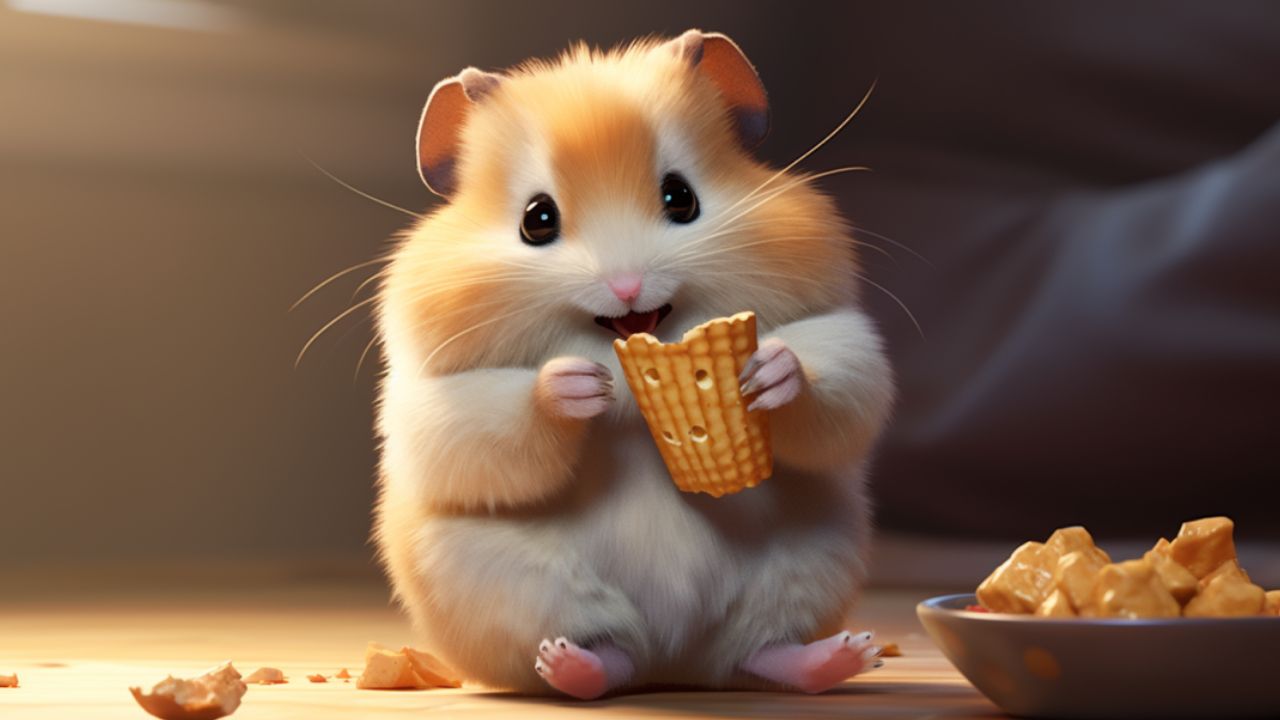
When it comes to clicker training, or any form of training for that matter, the strategy you employ plays a pivotal role in the outcome. 🌟 Just like baking a cake, you need the right ingredients, the right temperature, and the correct baking time. In the world of hamster training, your ingredients are your techniques, and the baking time? Well, that’s your consistency. Let’s dive deep into these methodologies that ensure your hamster dances to your tunes (or clicks, in this case).
Positive Reinforcement
One of the golden rules in the world of animal training is positive reinforcement. This principle is simple but powerful. Every time your hamster does something you appreciate, reward them. The rewards can vary:
- Tasty Treats: Who can resist a delicious snack? Hamsters love treats, be it a piece of fresh carrot 🥕, a sunflower seed, or a tiny chunk of cheese.
- Gentle Strokes: Sometimes, a little petting or a gentle stroke on their fur is all the reward they need. It’s a sign of affection that they’ll come to cherish.
- Playtime: Letting them out for a bit of exploration or play can also act as a positive reinforcement.
By consistently rewarding good behavior, you’re letting your hamster know what’s expected of them, encouraging them to repeat that behavior.
Consistency is Key
Training a hamster isn’t a one-off event; it’s a journey. And the path to success is paved with consistency:
- Regular Sessions: Establish a training routine. Whether it’s every day or every alternate day, stick to a schedule.
- Short and Sweet: Hamsters have relatively short attention spans. It’s best to keep training sessions brief, around 5-10 minutes, ensuring they remain engaging and effective.
- Repetition: Repeating commands ensures that your hamster internalizes the behavior you’re teaching them.
Remember, training is like watering a plant. A little every day will help it grow, but too much at once can drown it.
Avoiding Overwhelm
While training is fun, it’s essential to ensure it remains a positive experience for your hamster:
- Observe Their Behavior: If your hamster seems agitated, restless, or overly distracted, it might be time to call it a day.
- Break Time: Ensure you give them enough breaks during the session. A minute or two to scamper around or nibble on something can make all the difference.
- Pace Yourself: Every hamster is unique. Some might pick up cues quickly, while others might need a bit more time. Respect their pace and avoid pushing them too hard.
Remember, the goal is to make training an enjoyable activity, not a chore. With patience and the right techniques, you’re well on your way to having a well-trained, happy hamster! 🐹❤️🎉
Challenges & Troubleshooting

Embarking on the journey of clicker training with your hamster is much like sailing a boat. While the waters may be calm and serene most of the time, there might be occasional storms or turbulent tides that you need to navigate through. But fear not! With the right knowledge, you can overcome these challenges and ensure a smooth sail. Let’s address some common challenges and dispel doubts that often surround clicker training. 🛠️🌊
Common Hurdles
Every hamster parent, at some point or another, will face a few stumbling blocks in their training journey. Here’s how to tackle them:
- Distractions: Hamsters are curious creatures. They can easily get distracted by a new scent or a sudden noise. When this happens, try to minimize external disturbances and ensure your training space is calm and quiet.
- Lack of Interest: There might be days when your hamster seems entirely uninterested in training. It could be due to mood swings, health issues, or just a random off day. It’s okay to give them some space and resume training when they seem more receptive.
- Overexcitement: Sometimes, the anticipation of treats can make your hamster overly enthusiastic, making them hard to train. In such cases, try using smaller or less appealing treats or switch to non-food rewards for a while.
- Not Responding to Clicks: If your hamster doesn’t seem to react to the clicker initially, give it some time. It might take a few sessions for them to associate the click sound with rewards.
Doubt Dispelling
The world of hamster training, especially clicker training, has its fair share of myths and misconceptions. Let’s set the record straight:
- “Clicker Training is Just a Fad”: Not true! Clicker training is rooted in the science of operant conditioning and has been effectively used for various animals, from dogs to dolphins. Its success with hamsters is just another feather in its cap.
- “Only Young Hamsters Can Be Trained”: Age is just a number! While younger hamsters might pick up commands slightly faster, older hamsters can be trained effectively with a little extra patience.
- “Using Food Rewards Will Make My Hamster Fat”: It’s all about moderation. Using tiny treats, especially healthy ones, won’t lead to weight gain. Moreover, the mental and physical activity associated with training can counteract the calorie intake.
Remember, every challenge is a stepping stone to success. With dedication, love, and a dash of patience, you can transform these hurdles into learning experiences, ensuring your hamster-training journey is as joyful as it is fruitful. 🐹❤️🌈
Hannah’s Training Tactics
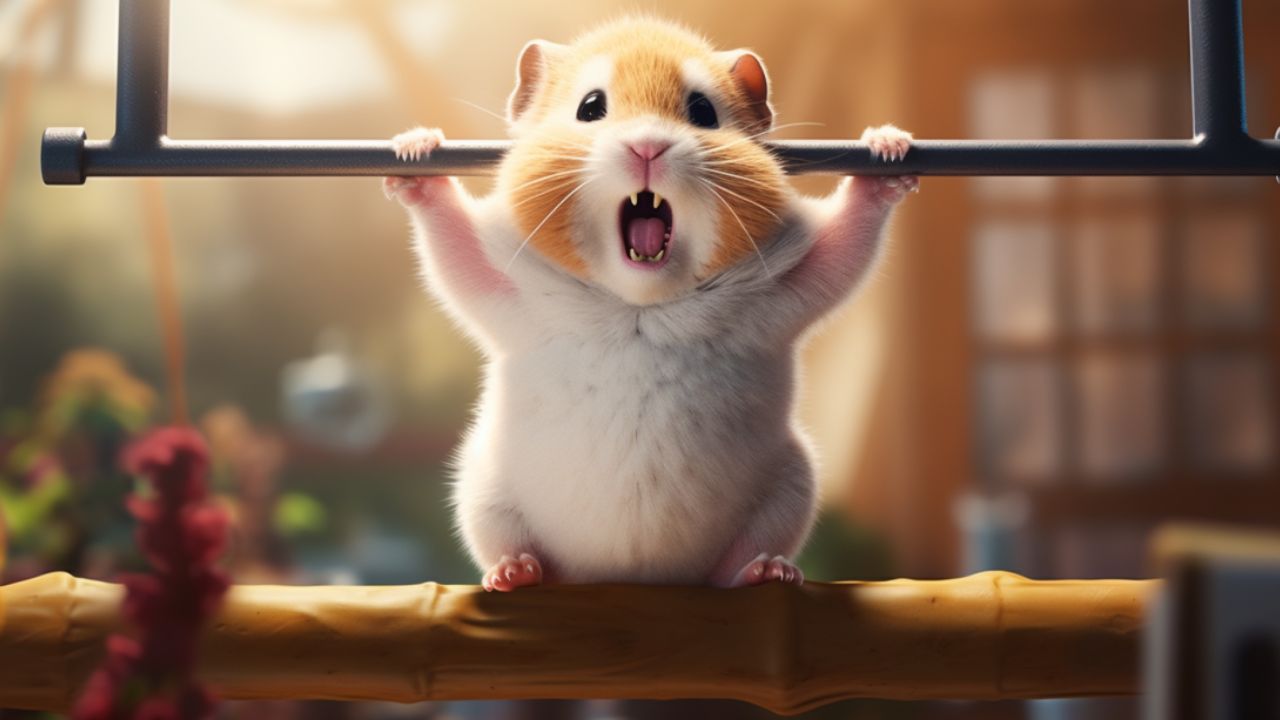
Hey there, fellow hamster enthusiasts! It’s Hannah Hammie here, and I’m thrilled to share my special corner of hamster wisdom with you all. 🐹✨ Over the years, I’ve picked up some handy tricks of the trade that can make your clicker training journey with your furry friend an absolute breeze. Buckle up; we’re diving deep into the world of training tactics that have been tried, tested, and hammie-approved!
Click & Treat Timing
Imagine you’re playing a game where you’re supposed to hit a button every time a light flashes, and you get a point each time you do it correctly. Now, would it make sense if you were given that point five minutes later? Probably not. The same goes for our adorable hamster pals.
In the realm of clicker training, timing is everything. The click sound should be an immediate “Good job!” signal for your hamster, closely followed by their reward. This immediate feedback helps them connect their behavior with the positive outcome, ensuring they’re more likely to repeat it in the future. Delayed rewards can confuse them, making the training less effective. Always have treats at the ready, and the moment you click, reward your hamster. 🕰️🍪
Training Progression
Starting with basic commands is always the way to go. Maybe it’s as simple as getting them to come to you when they hear the clicker. But once they’ve got that down, it’s time to raise the bar a little.
Progressing in your training sessions keeps things interesting for both you and your hamster. Once the basics are mastered, introduce more complex behaviors or tricks. Perhaps you could train them to stand on their hind legs or navigate a mini obstacle course. The sky’s the limit! Remember to be patient and consistent. Every hamster has its own pace, and it’s essential to respect that. Celebrate every tiny victory and keep the sessions enjoyable. Before you know it, you’ll have a superstar hammy showing off their incredible skills! 🌟🎪
Space Matters
Let’s face it: while we might love a change of scenery now and then, our hamsters are creatures of habit. They thrive in familiar environments where they feel safe and comfortable. This is especially true during training sessions.
When setting up for clicker training, choose a space that’s quiet and well-known to your hamster. This familiarity allows them to focus solely on the training without getting distracted or feeling anxious. A sudden noise or an unfamiliar setting can be stressful for them, hindering their learning. So, ensure that their training arena is free from loud noises and potential disturbances. Over time, as they become clicker training pros, you can introduce them to new environments, but always start in their comfort zone. 🏠💕
Training is more than just teaching tricks; it’s about building trust, strengthening your bond, and ensuring both you and your hammy have a blast together. With these tactics in your toolkit, you’re well on your way to creating countless delightful memories with your furry friend. Happy training! 🐹❤️🎉
Conclusion & Looking Forward

It’s been quite the journey, hasn’t it? From understanding the intricacies of clicker training to exploring the myriad benefits and navigating challenges, we’ve come a long way together. 🛤️🐹 But like any good story, while one chapter might be closing, another exciting one is just around the corner.
Reflecting on Progress
Every little click and treat, every triumphant dance move, and even the occasional missteps – they’re all part of the beautiful tapestry of your hamster’s learning journey. It’s essential to pause, reflect, and celebrate these moments. Whether it’s the first time your hammy responded to the clicker or the hundredth time they’ve dazzled you with a trick, each milestone deserves its spotlight. These shared experiences not only strengthen the bond between you and your furry pal but also highlight the wonders of patience and persistence. 🎉📜
Future of Hamster Training
While clicker training has brought a revolutionary twist to the world of hamster training, the horizon is always expanding with new possibilities. With advancing research and a deeper understanding of hamster behavior, we can anticipate even more refined training techniques to emerge. From tech-integrated tools that sync with our smartphones to virtual reality hamster adventures (imagine that!), the future is ripe with potential. It’s an exhilarating time to be a hamster parent, with countless innovations waiting to be explored. 🚀🔮
And with that, dear readers, we wrap up our deep dive into clicker training for hamsters. Remember, every little effort you invest in your hammy today paves the way for countless joyous moments tomorrow. As always, with paws and patience, you’re on the road to being a Hamster Whisperer. Happy training! 🐹❤️🌟



